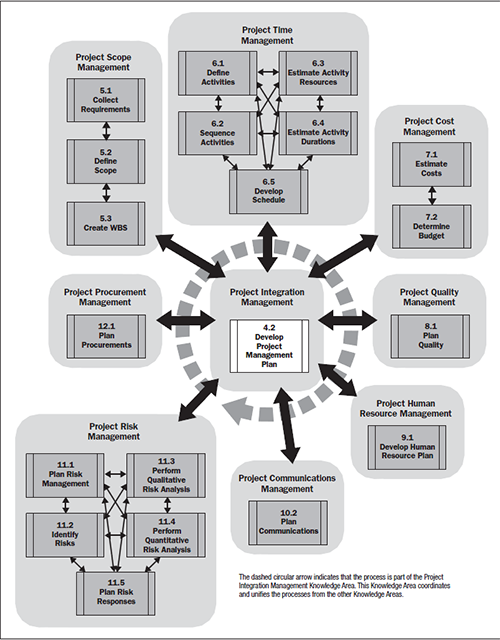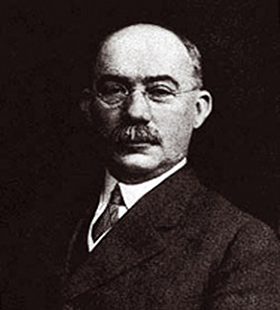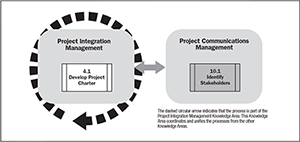Planning process
What need's to be done
In project planning, the project manager and the team perform a detailed analysis of whether the objectives in the project charter can be achieved. They also decide how the project will be accomplished, addressing all appropriate project mgmt processes and knowledge areas. This means determining what processes in the pmbok® guide are appropriate for the needs of the project, to avoid wasting resources on activities that are not relevant to the particular project. The planning process group is the only process group that follows a set order of processes.
The following are actions that are stated in the pmbok® guide:
- Developing the project mgmt plan
- Collecting requirements
- Defining Scope
- Creating the WBS
- Defining activities
- Sequencing activities
- Estimating activity resources
- Estimating activity durations
- Developing Schedule
- Estimating costs
- Determining Budget
- Planning Quality
- Developing human resource plan
- Planning communications
- Planning risk mgmt
- Identifying risks
- Performing qualitative risk analysis
- Performing quantitative risk analysis
- Planning risk responses
- Planning procurements
You need a more detailed understanding of what really should be done during project planning:
- Determine how you will plan the mgmt efforts for all knowledge areas
- Refine the high-level requirements
- Expand on the assumptions [look for new assumptions]
- Refine high-level constraints
- Create a description of the project deliverables
- Gain approval of the final scope before further planning
- MoB decision
- Determine who will be on the project team
- Break down work into smaller pieces
- Create descriptions of work packages
- Break down work packages into list of activities
- Sequence activities
- Estimate resource requirements
- Gain resource commitment [meet with functional mgr’s]
- Decide level of accuracy for estimates
- Estimate time and costs by those who do the work
- Determine how long the project will take w/o compressing the schedule
- Develop a preliminary schedule ignoring the constraints, and reconcile the two
- Develop a preliminary budget ignoring the constraints, and reconcile the two
- Determine quality practices and standards
- Determine the processes the project will follow
- Determine how to improve the processes in use
- Create recognition and reward system
- Determine the roles and responsibilities on the project
- Determine the information needed from other projects
- Plan what will be communicated on the project
- Complete detailed risk identification, qualitative and quantitative risk analysis, and risk response planning
- Go back – Iterations, work toward a project mgmt plan that is realistic
- Prepare procurement documents
- Look for positive and negative interactions with other projects
- Determine the processes to control change
- Finalise the “execute” and “control” aspects of all mgmt plans
- Plan ways to measure project performance
- Determine what meetings, reports, and other activities you will use to control the project
- Develop the final project mgmt plan and baselines
- Gain formal approval of the project mgmt plan
- Hold a kick-off meeting with key stakeholders, team, functional mgr’s, and customers
Detailed planning
The results of the planning effort are a project mgmt plan and project documents. Project planning is iterative. Each planning process performed may use the result of the previous processes, and each process may affect or cause changes to the previous processes. The idea is to attempt to comlete each planning process as fully as possible. Then, after risk identification, qualitative and quantitative risk analysis, and risk response planning, you go back to finalize all the components of the project mgmt plan and project documents.
It is only after risk mgmt that the final cost and schedule can be determined. Risk mgmt could also result in changes to the resources, when they are used, in what sequence activities are performed, and almost all other parts of the project.
Project planning does not just occur when the project is beginning. We also move back into planning to accommodate changes to the project.
Mgmt plans
There are many components to mgmt plans, but generally they answer the question of "HOW will I go about planning scope, schedule, cost, etc. ?" and "HOW will I manage and control scope, schedule, cost, etc. ?"
The answers to these questions are determined as part of project planning. The individual mgmt plans are combined into an overall project mgmt plan. Another important aspect to understand about planning is that the amount of time the team spends in project planning and the level of detail achieved in the plan should be appropriate to the needs of the project.
Phase planning
Some projects cannot be fully planned to a detailed degree prior to starting work on the project. These projects are often organised by phases. In such cases, only the first phase may be fully planned, while the later phases are planned at a higher level until more is known about the project. Detailed planning for the next phase is then done as the previous phase nears completion. This approach is called "rolling wave planning".
Tools & Techniques
Download our matrix of tools and techniques assigned to the individual processes
Inputs
The pmbok® guide lists following inputs to this process group:
Develop project mgmt plan
- Project charter
- Outputs from planning process
- EEF
- OPA
Collect requirements
- Project charter
- Requirements documentation
- OPA
Define scope
- Project charter
- Stakeholder register
Create WBS
- Project scope statement
- Requirements documentation
- OPA
Define activities
- Scope baseline
- EEF
- OPA
Sequence activities
- Activity list
- Activity attributes
- Milestone list
- Project scope statement
- OPA
Estimate activity resources
- Activity list
- Activity attributes
- Resource calendars
- EEF
- OPA
Estimate activity durations
- Activity list
- Activity attributes
- Activity resource requirements
- Resource calendars
- Project scope statement
- EEF
- OPA
Develop schedule
- Activity list
- Activity attributes
- Project schedule network diagrams
- Activity resource requirements
- Resource calendars
- Activity duration estimates
- Project scope statement
- EEF
- OPA
Estimate costs
- Scope baseline
- Project schedule
- Human resource plan
- Risk register
- EEF
- OPA
Determine Budget
- Activity cost estimates
- Basis of estimates
- Scope baseline
- Project schedule
- Resource calendars
- Contracts
- OPA
Plan Quality
- Scope baseline
- Stakeholder register
- Cost performance baseline
- Schedule baseline
- Risk register
- EEF
- OPA
Develop human resource plan
- Activity resource requirements
- EEF
- OPA
Plan Communications
- Stakeholder register
- Stakeholder mgmt strategy
- EEF
- OPA
Plan risk mgmt
- Project scope statement
- Cost mgmt plan
- Schedule mgmt plan
- Communications mgmt plan
- EEF
- OPA
Identify risks
- Risk mgmt plan
- Activity Cost estimates
- Activity duration estimates
- Scope baseline
- Stakeholder register
- Cost mgmt plan
- Schedule mgmt plan
- Quality mgmt plan
- Project documents
- EEF
- OPA
Perform Qualitative risk analysis
- Risk register
- Risk mgmt plan
- Project scope statement
- OPA
Perform Quantitative risk analysis
- Risk register
- Risk mgmt plan
- Cost mgmt plan
- Schedule mgmt plan
- OPA
Plan risk responses
- Risk register
- Stakeholder mgmt plan
Plan procurements
- Scope baseline
- Requirements documentation
- Teaming agreement
- Risk register
- Risk related contract decision
- Activity resource requirements
- Project schedule
- Activity cost estimates
- Cost performance baseline
- EEF
- OPA
Outputs
The pmbok® guide lists following outputs to this process group:
Develop project mgmt plan
- Project mgmt plan
Collect requirements
- Requirements documentation
- Requirements mgmt plan
- Requirements traceability matrix
Define scope
- Project scope statement
- Project documents update
Create WBS
- WBS
- WBS Dictionary
- Scope baseline
- Project document updates
Define activities
- Activity list
- Activity attributes
- Milestone list
Sequence activities
- Project schedule network diagram
- Project documents update
Estimate activity resources
- Activity Resource requirements
- Resource breakdown structure
- Project documents update
Estimate activity durations
- Activity duration estimates
- Project documents update
Develop schedule
- Project schedule
- Schedule baseline
- Schedule data
- Project documents update
Estimate costs
- Activity cost estimates
- Basis of estimates
- Project documents update
Determine Budget
- Cost performance baseline
- Project funding requirements
- Project documents update
Plan Quality
- Quality mgmt plan
- Quality metrics
- Quality checklist
- Process improvement plan
- Project documents update
Develop human resource plan
- Human resource plan
Plan Communications
- Communications mgmt plan
- Project documents update
Plan risk mgmt
- Risk mgmt plan
Identify risks
- Risk register
Perform Qualitative risk analysis
- Risk register update
Perform Quantitative risk analysis
- Risk register update
Plan risk responses
- Risk register updates
- Risk related contract decision
- Project mgmt plan updates
- Project documents update
Plan procurements
- Procurement mgmt plan
- Procurement SoW
- MoB Decision
- Procurement documents
- Source selection criteria
- Change request
Flow chart

Fig. planning process group
Next...
executing process



















